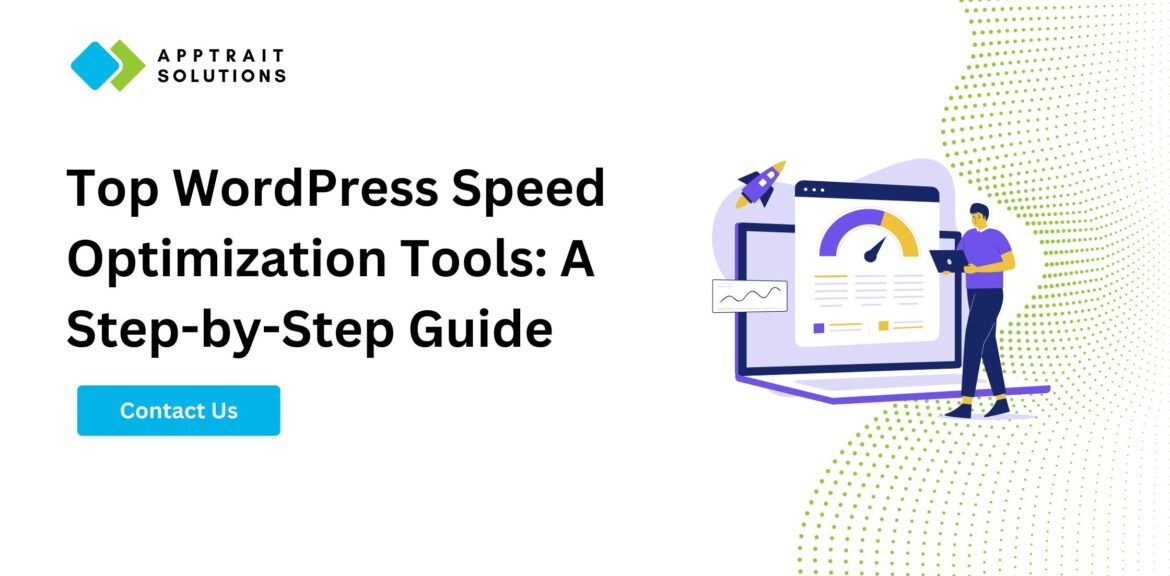Is your website struggling to rank well, convert visitors, or give users a smooth experience? You’re not alone; most site owners hit these roadblocks. The good news? You don’t need a tech degree to fix it. With the right WordPress speed optimization tools, you can identify and resolve issues impacting SEO, user experience, accessibility, and conversions. Speed optimization for WordPress is a key factor in achieving these goals.
In this guide, we’ll walk through 12 powerful tools for How to speed up WordPress site?
Why WordPress Speed Optimization Tools Matter
Tools of WordPress Speed Optimization bring real benefits like
- Enhanced User Experience: Faster sites keep visitors happy and reduce bounces.
- Better SEO: Search engines reward sites that load fast.
- Higher Conversions: A quicker site can mean more completed purchases or sign-ups.
- Reduced Server Load: Less strain on your server means more reliable performance.
Also Read Tips to improve WordPress Page Seed
Top WordPress Speed Optimization Tools
To speed things up, here are some top tools
Page Speed Tools
- Google PageSpeed Insights: Free, with insights and recommendations to boost performance.
- GTmetrix: Detailed performance breakdowns and optimization suggestions.
- Pingdom: Comprehensive monitoring with features like alerts for site issues.
SEO Tools
- Google Search Console: Track SEO performance, keyword clicks, and speed errors.
- Ahrefs: Research keywords, analyze backlinks, and spy on competitors.
- Semrush: All-in-one tool for keyword research, site audits, and competitor insights.
UX Optimization Tools
- Hotjar: Behavior analytics with heatmaps, user recordings, and surveys.
- UserTesting: Get real feedback from real users on your site’s experience.
- UsabilityHub: Test usability and collect feedback to optimize navigation and design.
Conversion Rate Optimization (CRO) Tools
- Optimizely: A/B and multivariate testing to experiment with different layouts.
- VWO: CRO platform with advanced A/B testing features.
- Hotjar: Also useful for CRO, with heatmaps and user interaction recordings.
Mobile Optimization Tools
- Google Mobile-Friendly Test: Quick check to see if your site is optimized for mobile.
- PageSpeed Insights: Offers mobile-specific performance insights.
- Responsive Design Checker: Ensures your site looks good on every device.
Accessibility Tools
- WAVE: Checks for accessibility issues to help make your site inclusive.
- Check My Colors: Assesses color contrast for users with visual impairments.
- EqualWeb: Focuses on making your site mobile-accessible for all users.
Choosing the Right Tools
When selecting tools, consider:
- Your Site’s Needs: Assess the specific issues holding your site back.
- Budget: Find tools that meet your financial limits.
- Technical Expertise: Pick tools that match your skill level.
- Features: Ensure the tools cover what you need—no more, no less.
- Compatibility: Confirm they work well with your WordPress setup.
- Support: Good support can be a lifesaver when troubleshooting.
Extra Optimization Techniques
Tools are great, but they’re not a cure-all. To maximize performance, keep these in mind:
- Image Optimization: Compress images to reduce file sizes.
- Content Optimization: Keep it concise and scannable to improve load times.
- Quality Hosting: Choose a reliable host with fast servers.
- CDN Integration: Use a CDN to serve content faster, especially for global audiences.
- Database Optimization: Clean up and Optimize WordPress site speed queries.
Monitoring & Troubleshooting for a Smooth Experience
A little upkeep goes a long way. Here’s how to keep things running smoothly
Performance Monitoring Tools
- Google PageSpeed Insights: Provides regular performance insights.
- GTmetrix: Deep analysis and practical recommendations.
- Pingdom: Tracks site load times, page size, and more.
Identifying Bottlenecks
- Pinpoint Slow Pages: Use tools like PageSpeed Insights to find lagging pages.
- Check Network Activity: Use developer tools to spot slow-loading resources.
- Monitor Server Performance: Look at server metrics like CPU and memory to find issues.
Troubleshooting Tips
- Disable Plugins: Temporarily turn off plugins to see if one’s slowing things down.
- Check for Malware: Malware can be a silent performance killer, so scan regularly.
- Review Logs: Server and error logs can reveal issues hiding under the hood.
- Ask for Help: A developer or support pro can often solve tricky issues quickly.
If you’re struggling with WordPress speed, consider using a WordPress plugin for speed optimization. These WordPress Speed plugins can help you minify files, optimize images, and improve overall site performance.
Conclusion
Speeding up your WordPress site isn’t just about appearances it’s about delivering a great experience and driving results. With these tools and a bit of regular monitoring, you can keep your site fast, user-friendly, and effective. Remember, optimization is ongoing, so keep an eye on your site’s performance and make improvements as needed. Your users (and your search rankings) will thank you.



